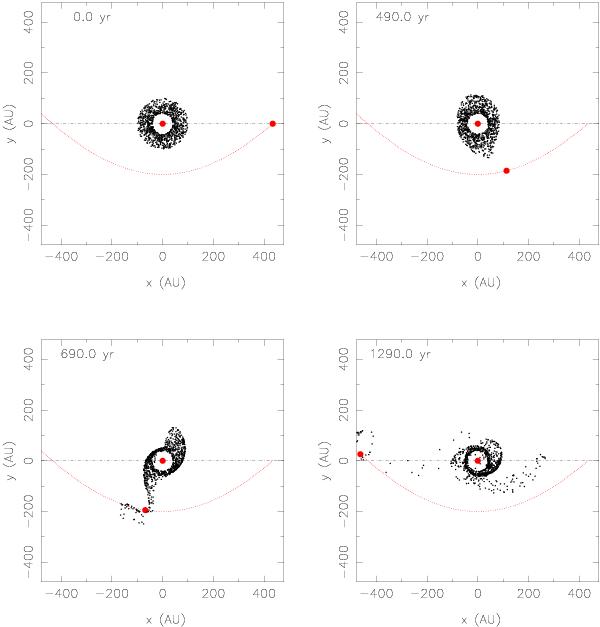Fig. 1

Stellar flyby. The debris disk is non-self-gravitating, and has inner and outer radii of 40 and 100 AU at the start of the simulation. The central star is at the origin of the coordinate system. The trajectory of the passing star is parabolic, coplanar and prograde with respect to the disk. The mass ratio of the two stars is unity. At the closest approach, the miss distance is 200 AU and the resulting maximum velocity is 4.2 km s-1. The fraction of planetesimals stripped off the disk and lost by the system is 13% during this close stellar encounter.
Current usage metrics show cumulative count of Article Views (full-text article views including HTML views, PDF and ePub downloads, according to the available data) and Abstracts Views on Vision4Press platform.
Data correspond to usage on the plateform after 2015. The current usage metrics is available 48-96 hours after online publication and is updated daily on week days.
Initial download of the metrics may take a while.


